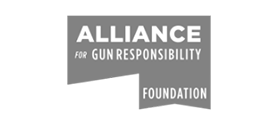Get Help
If you are a victim and your abuser has a gun or you feel unsafe for other reasons, it is important to work with a victim advocate. The following organizations can help you find an advocate free of charge:
- The National Domestic Violence Hotline at (800) 799-SAFE (7233);
- VictimConnect at (855) 484-2846;
- The Washington State Domestic Violence Hotline at 800-562-6025;
- Any of the local domestic violence programs listed here or here.
It is also helpful to have a lawyer assist you, particularly when you are seeking an order for protection. You can find a lawyer using the Washington State Bar’s website. If you cannot afford a lawyer, information about free- and low-cost legal help is available from Washington Law Help.
How to Get Protection
What kind of domestic violence orders for protection are available?
Washington courts can issue two types of domestic violence orders for protection. In each of these orders, the court can help protect you from gun violence or threats of gun violence by an intimate partner:
- Temporary orders for protection1*
- (Final) orders for protection2*
In some cases, courts issuing temporary orders for protection can prohibit respondents* from possessing* firearms and require them to get rid of their firearms.3
Washington law also automatically prohibits most respondents to (final) orders for protection from purchasing or possessing firearms and requires them to get rid of their firearms.4
How can you get an order for protection?
Click here to see if you are eligible for an order for protection in Washington.
You can find out more about how to get protection at WomensLaw.org.
You can find your local court here.
Court forms can be found here.
What do I do if I do not qualify for protection as a victim of domestic violence but I still need protection from someone?
If you do not qualify for protection as a victim of domestic violence but need protection from someone (including a stranger, an acquaintance, or another person not covered under a domestic violence protection order), you might qualify for some other type of order. Contact VictimConnect at (855) 484-2846 or a lawyer for more information. You can find a lawyer using the Washington State Bar’s website. If you cannot afford a lawyer, information about free- and low-cost legal help is available from Washington Law Help.
How can the court help protect you?
In Washington, respondents* to (final) orders for protection that meet certain requirements are prohibited from purchasing or possessing* firearms.5 The respondent is required to surrender their firearms6 to law enforcement in one of the following ways:
- If the respondent was not present in court when the order was issued, law enforcement will serve* the order. The respondent must surrender their firearms to the law enforcement officer serving the order.
- If the respondent was present in court when the order was issued, the respondent must surrender their firearms to local law enforcement that same day.7
The respondent then must file* proof with the court within five days that they either surrendered their firearms or they have no firearms to surrender.8
In certain cases, courts can prohibit respondents to temporary orders of protection from purchasing firearms and can require them to get rid of their firearms.9 Depending on the respondent’s past use of the firearm, this might be mandatory.10
Washington courts can also order whatever relief*they deem necessary to protect you – this means that if your case is not fully covered under the law cited above, a court can still protect you from gun violence.11 Some of the things a court can order include:
- Requiring the respondent to turn over their firearms to local law enforcement immediately;
- Prohibiting the respondent from purchasing or possessing any other firearms while the order is in effect;
- Ordering law enforcement to retrieve the respondent’s firearms if the respondent does not turn them in as directed by the court;
- Requiring the respondent to appear before the court to self-report turning over their firearms as ordered;
- Directing law enforcement to follow up with the respondent to make sure the respondent turned over their guns as ordered;
- Scheduling a follow up compliance hearing* to ensure that the respondent has not accessed additional firearms since the order was issued;
- Ordering law enforcement to go to your home at scheduled times to check in on your safety;
- Ordering the respondent to stay away from you, your children, your family, and anyone else in immediate danger, based on the threats and/or actions of the respondent;
- Ordering the respondent not to hurt you or threaten to hurt you in the future;
- Anything else you need to be safe.
How will the court know what you need to protect you from the respondent’s firearms violence?
In your petition*and during any of the hearings*you participate in when you are seeking protection, you will have the opportunity to tell the court about the respondent’s*threats or acts of abuse, especially ones involving firearms. Every situation is different, and it is important to talk to a lawyer about your specific situation. You can find a lawyer using the Washington State Bar’s website. If you cannot afford a lawyer, information about free- and low-cost legal help is available from Washington Law Help.
Your story will help the court decide what relief*to give you. Whether you are filling out court forms or speaking directly to the court, it is important to tell the court about the violence you experienced (working with your lawyer, if you have one), especially if the respondent used or threatened to use a firearm against you, a member of your family, any member of the community, or your pet. Among other things, this may include telling the court:
- About incidents of physical violence or threats of physical violence and include dates wherever you can;
- How the respondent used firearms to hurt or threaten you, your family, your pet(s), or anyone in the community;
- If you fear that the respondent may use firearms violence or threats of firearms violence in the future;
- If the respondent has threatened to harm him/her/themself. This may be a sign that the respondent intends to use a dangerous weapon like a firearm against you, themself, or other people;
- If you can, the type(s), number, and location of firearms the respondent has access to.



